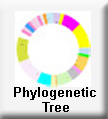Hemicycliophora gracilis
Thorne, 1955
Female : 1.3-1.7 mm; a = 27; b = 6.1; V – 4081
Body with 341-390 annules. Larval cuticle fitting loosely about
body. Lateral fields marked by 2 longitudinal lines which are obscure
on many specimens. Lip region rounded, with 2 large annules.
Spear length equal to about 30 of the neck annules. Knobs of spear
extending somewhat backward. Vulva-terminus distance two and one-half
times spear length. Basal bulb of esophagus clavate. Excretory pore
about one body width posterior to base of esophagus, its tube leading back
about 5 body widths to join the renette gland on the right side of the
body. Hemizonid not observed. Intestinal cells somewhat vacuolated,
containing a few scattered granules. Ovary sometimes reaching as
far as the median esophageal bulb. Uterus without spermatheca.
Vulva 70 to 80 annules from terminus. Body slightly contracted posterior
to vulva. Eggs averaging about 30 x 100 u. Anus very
obscure, 20-30 annules behind vulva. Tail convex-conoid, then spicate.
Annules absent on terminal third of spicate portion.
DIAGNOSIS.- Hemicycliophora with the above general description.
Distinctive because of the 2 lines on the lateral field, the rounded lip
region and the convex-conoid tail ending in a spicate terminus.
TYPE LOCALITY.-Soil from stream bank, Broad Run, Virginia.
Also collected from a peach orchard near South Haven, Michigan; pine barrens,
Monmouth County, New Jersey; grass roots near Raleigh, North Carolina;
and about gladiolus corms, Grants Pass, Oregon. The Oregon specimens
were collected by Harold J. Jensen.
(Original Description- Thorne, 1955
0.8 mm; a = 19; b = 5.2; c = 8.4; V = 80
Body nearly straight with relaxed. Lip region bluntly conoid
with 2 obscure striae. Spear 83 um long, occupying 26 annules.
Uterus with offset pouch which may be a rudimentary spermatheca.
Tail occupying 28 annules. General morphology as
illustrated.
(Description- Thorne, 1968)
This
species included in the Criconematid Project
DNA Sequence Obtained
specimen:
collected:





